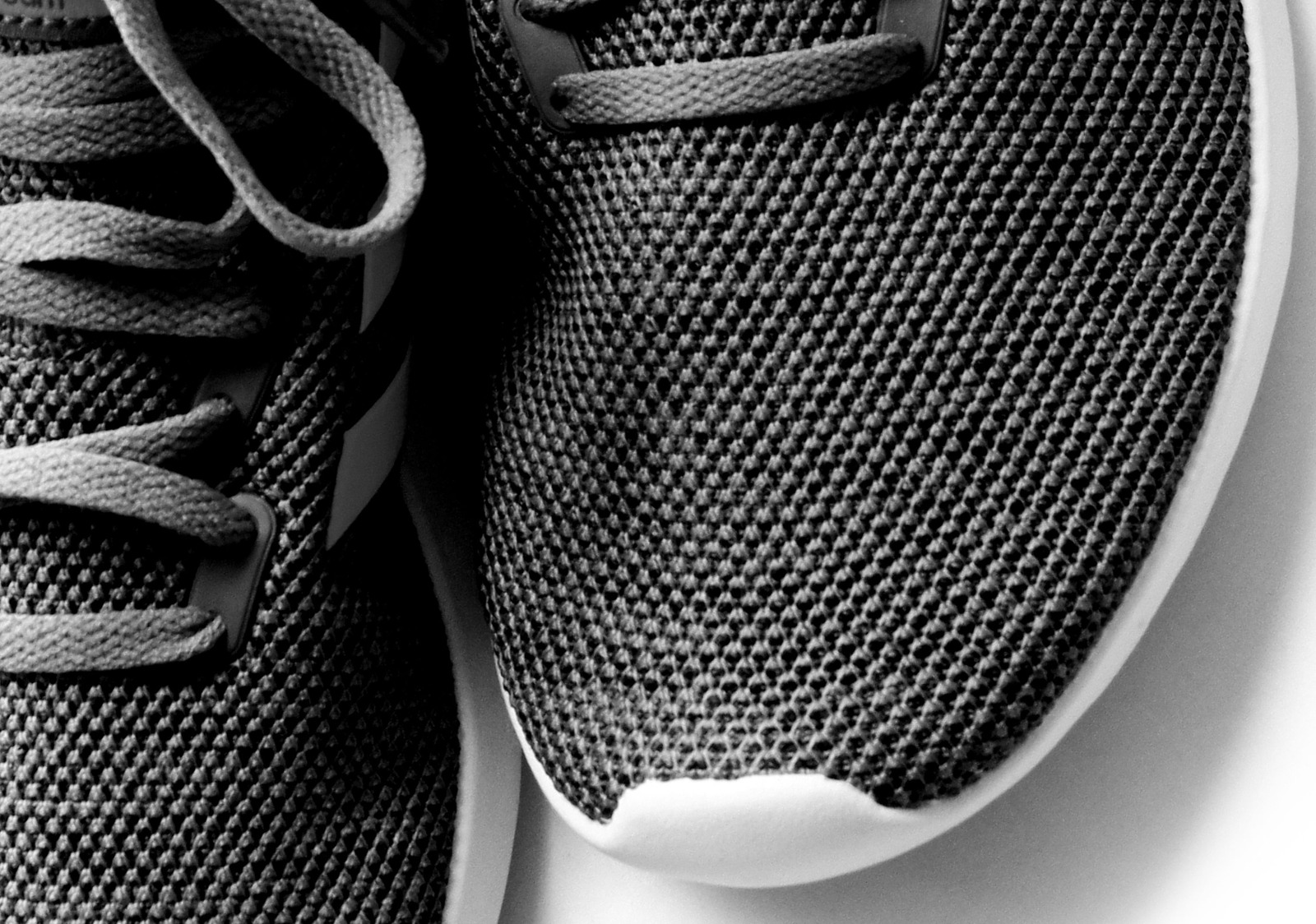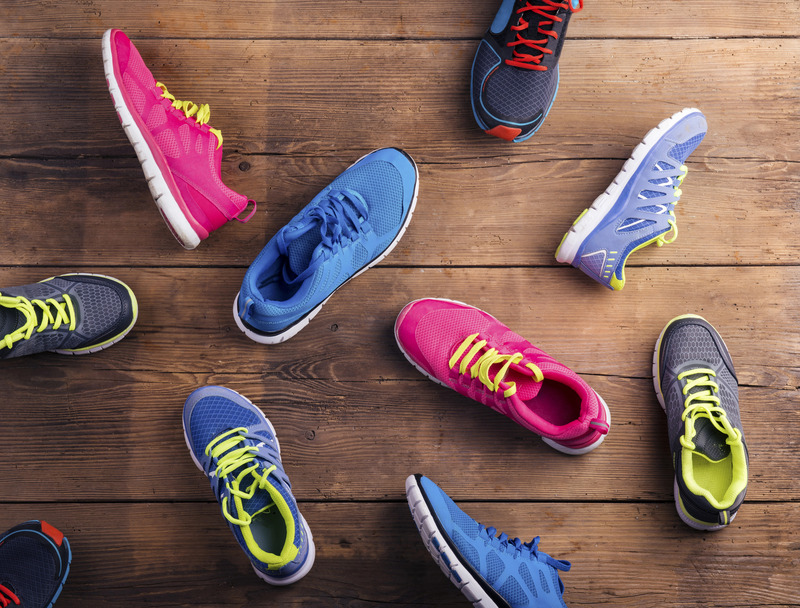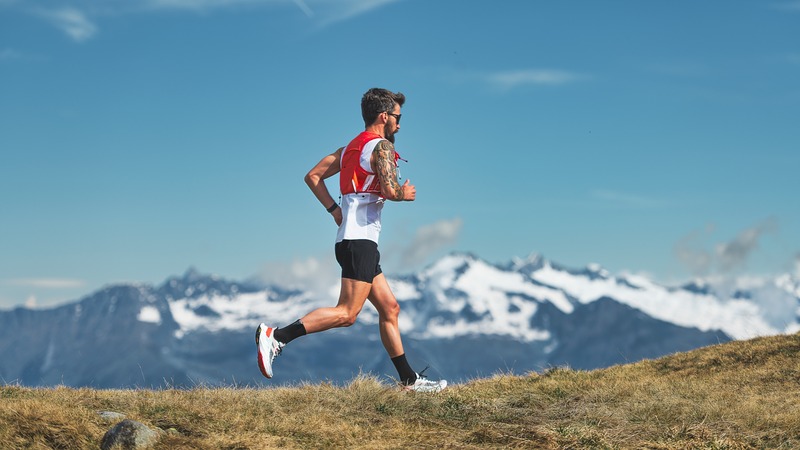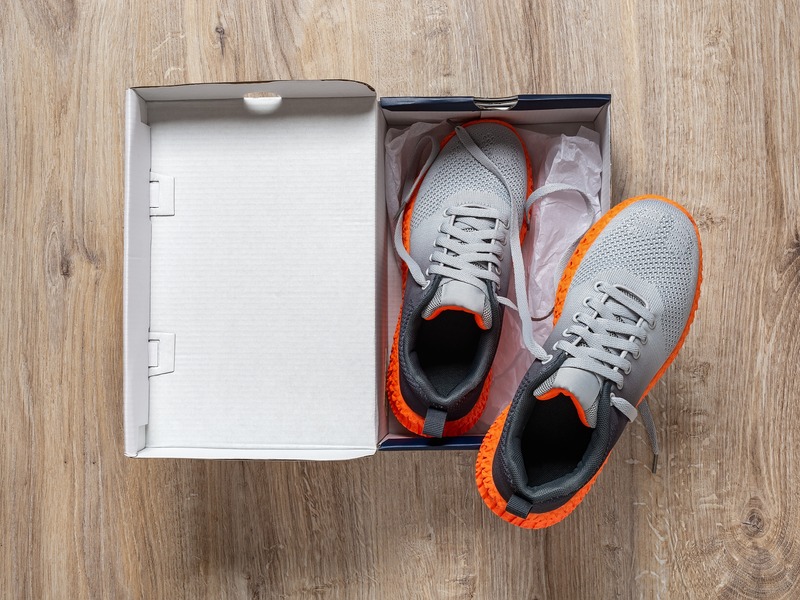Running Shoe Uppers: A Guide to Materials, Fit, and Choosing the Right One for Your Needs
July 2, 2024

When you buy through links on our site, we may earn an affiliate commission.
Have you ever slipped on a new pair of running shoes and marveled at how they seem to hug your feet just right? Or maybe you've experienced the opposite – shoes that felt restrictive, hot, or just plain uncomfortable. The secret to that perfect fit feeling often lies in having the right running shoe upper.
In the world of running shoes, we often focus on cushioning and support. But it's the upper – the part of the shoe that wraps around your foot – that often plays the most functional role in your comfort and performance.
So, let's examine running shoe uppers in more detail, assessing materials, features, and what you should look for in your next pair of running shoes based on your needs.
Types of Running Upper Materials
When it comes to running shoe uppers, two materials dominate the market: mesh and knit. Today, over 95% of running shoe uppers are made from some variation of these materials. Let's break down the pros and cons of each.
Mesh Uppers
Mesh has long been a favorite in the running world, and for good reason. Several studies have proven its superior breathability, and it's also lightweight and affordable. However, recent advances in standard running mesh uppers mean you now have a choice between two main varieties: monomesh and regular mesh.
Monomesh is a single layer of engineered mesh with no stitching or sewing parts. It's the gold standard for racing shoes and high-end trainers, offering unparalleled breathability and a second-skin fit. However, this premium construction comes with a higher price tag.
Regular mesh, by contrast, consists of multiple layers sewn or glued together. It's more common in daily trainers due to its lower manufacturing cost, but it can be more prone to causing blisters or hot spots due to friction.
Other drawbacks of mesh include its enhanced susceptibility to ripping and tearing under pressure and, depending on other upper construction factors, less flexibility.
Running Knit Uppers
Knit uppers have gained popularity in recent years, offering a sock-like fit that many runners love. These uppers are created from a single piece of material, reducing seams and potential friction points. Knit uppers are the gold standard for fit and can stretch to accommodate different foot shapes.
However, they may not offer as much structure or support as some mesh options. They also absorb and retain water more readily in wet conditions, and they certainly lack as much breathability as mesh.
That said, recent advances, particularly by Nike with their Flyknit upper, deliver the best of both worlds with excellent breathability and superior fit. The downside, of course, is the cost, with only the premium shoes (such as the Nike Vaporfly) featuring the most advanced Flyknit uppers.
GORE-TEX and Other Waterproof Membranes
GORE-TEX and other waterproof membranes represent a tiny but growing market segment. These materials are designed to keep your feet dry in wet conditions while still allowing some breathability.
They're excellent for trail running or road running in rainy climates. However, they add weight to the shoe and can feel overly warm in dry conditions.
Upper Construction and its Influence on Delivering a Good Fit
Upper materials are undoubtedly important, and your choice will definitely influence how a shoe feels from the get-go. But the way an upper is constructed also plays a significant part in how a shoe fits and feels on your foot. A well-designed upper should provide a secure fit without feeling restrictive, allowing your foot to move naturally through your stride.
While we mentioned that almost all running shoes on the market are either mesh or knit, support features in uppers can vary wildly between brands and shoe models. Some incorporate overlays – additional layers of material strategically placed to provide structure and support in the midfoot area. Others use varying knit or mesh densities to create zones of support.
But don't discount the overall construction design either. Features such as heel counters and heel collars can help lock your heel in place and provide stability. You might also appreciate a roomy toe box that allows your toes the extra flexibility to splay naturally, enhancing comfort on longer runs. And if you're fed up with dealing with bruised toes or black toenails, you might want to consider purchasing a pair of running shoes with a minimized (or non-existent) toe cap.
These features may seem small on the surface, but combined, they have a massive influence on how comfortable you feel during your runs, so don't discount them.
Choosing the Right Upper for Your Needs
When selecting a running shoe upper, consider your running style, preferred terrain, and local weather conditions. A highly breathable mesh or knit upper might be your best bet if you're a roadrunner in a predominantly warm climate. But if you're a trail runner hitting dirt paths in the middle of fall in the Midwest, opting for a reinforced mesh or a waterproof membrane would make more sense.
Your foot shape also plays a role in choosing the right upper. A stretchier knit upper might provide a more comfortable fit if you have a wider foot or high instep. Those with narrower feet might prefer a more structured mesh upper that can be cinched down securely.
Above all, follow your gut. Your personal preferences should always guide your decisions, especially regarding comfort. Some runners love the snug, sock-like feel of a knit upper, while others prefer the more traditional feel of a mesh construction. The best shoe is ultimately the one that feels most comfortable to you.
Focus on Lightweight Uppers for Racing Shoes
When it comes to racing, every gram counts. That's why race-day shoes often feature ultra-lightweight uppers designed to shave precious seconds off your time. These uppers are typically made from advanced monomesh materials, prioritizing minimal weight and maximum breathability. However, as mentioned above, brands like Nike have shown that race-day knit uppers can be equally impressive while delivering a better sock-like fit.
The pursuit of lightweight design often comes with trade-offs. Racing shoe uppers are typically less durable than your average daily mileage shoes and don't tend to offer as much support or protection. That's why many runners reserve their racing shoes for competition and key workouts, using more robust trainers for their day-to-day miles.
On that front, popular racing shoe designs often feature minimal overlays and streamlined lacing systems to further reduce weight. The latest racing shoes feature uppers influenced by a carbon plate in the midsole, with designs that work harmoniously with this new propulsive technology.
Find Your Perfect Running Shoe Upper Today
While it's tempting to think of your running shoes' upper as a “wrapper” for your foot, it plays a far more important role in comfort and performance than you may have first thought. Now you know the pros and cons of the two leading materials and how upper construction helps decide how a shoe “feels,” you can make more informed choices about your running shoes.
Of course, while this guide provides some foundational knowledge, there will never be a substitute for trying on several pairs of shoes to see how they each feel on your feet. Everyone is unique, and what may feel fantastic for you might feel loathsome for someone else.
Once you've identified the perfect running shoe upper design for your needs, don't forget to check RunningShoeDeals.com for the best prices. Simply enter your preferred shoe model in our search bar, and we'll scour the web to find you the most competitive deals from leading retailers.


